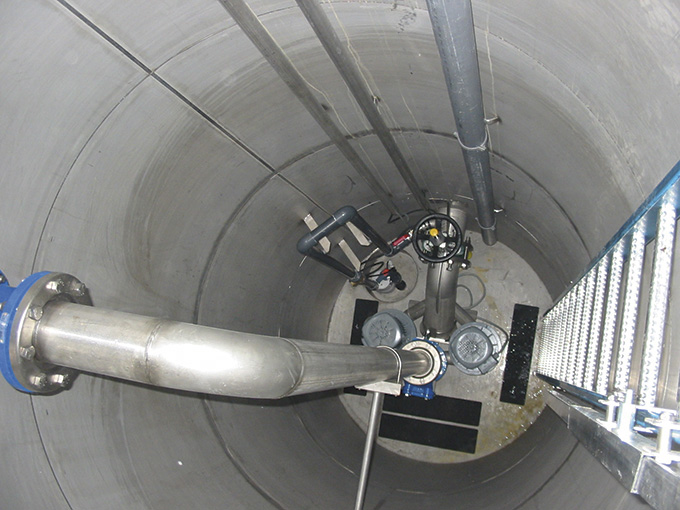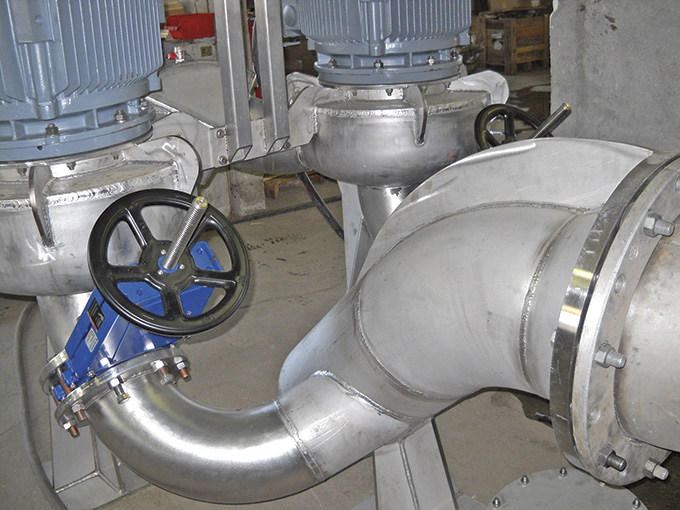As announced through the American Water Works Association, the industry's top priority for the fourth year in a row is the aging infrastructure of the nation's water systems. The aging workforce that is operating these water facilities—and the dwindling number of employees with specialized skills—is also a major concern. Finally, lack of funding and the costs to upgrade equipment and machinery add further concerns.
In response to these challenges, companies have been researching and developing various solutions to wastewater management. One innovative, sustainable wastewater pumping system addresses these issues by reducing problems associated with dirty and clogged wet wells. This solution prevents dirty and corroded wet wells, minimizes odors that infiltrate local neighborhoods, eliminates the need for "vac-truck" services and reduces the hours that employees must spend on call.
As U.S. municipalities and industrial users begin installing technologically advanced lift stations, they must consider the importance of saving manpower hours and protecting the already compromised infrastructure that is in place.
They can accomplish these goals by implementing self-cleaning pumps within their systems. This equipment is capable of cleaning itself without human intervention, and it can be accomplished remotely.
 Image 1.Self-cleaning pumps help prevent the corrosion of lift station equipment and eliminate the need for bar screens and rakes, trash baskets, grinders and comminutors. (Images courtesy of C&B Equipment)
Image 1.Self-cleaning pumps help prevent the corrosion of lift station equipment and eliminate the need for bar screens and rakes, trash baskets, grinders and comminutors. (Images courtesy of C&B Equipment) Self-cleaning pumps help prevent the corrosion of lift station equipment and eliminate the need for bar screens and rakes, trash baskets, grinders and comminutors. Because employees can focus on more productive tasks and avoid the "dirty" jobs associated with cleaning lift stations, operations that employ self-cleaning pumps become even more attractive to prospective employees.
The daily issue of "flushables" causing problems with lift station pumps will no longer require personnel for on-site, regular attention. The equipment is free of float switches that attract grease and require cleaning. Neighborhoods will no longer experience hydrogen sulfide gas odors produced by the retention of raw sewage in wet wells as has been the case with submersible pumps for the last 60 years.
Through the use of self-cleaning pumps, wet wells are converted to clean, dry pumping system work areas that are safe for employees to enter if needed. The need for a separate valve vault is eliminated, and the size of the station footprint is reduced. The new, modern lift station is remotely managed, not just monitored. Users can remotely manage these systems with their smartphones, tablets or computers. The operator has the ability to visually see the performance of the pumps, make any desired adjustments, run tests and even order printed reports to be delivered to management via remote printers.
These self-cleaning pumps eliminate the need for typical daily or routine lift station site visits and support optimal use of power. Their proven electronic control techniques use soft starts and stops that eliminate water hammer shocks to valves and older force mains. These modern pumps only run at the necessary speeds, and they prevent large surges of wastewater from affecting the biomass of the treatment plant, making the operator's job easier and less costly. Effective use of the voltage control techniques will maintain power quality and ensure that the pumping equipment continues to operate efficiently. This modern system will contribute to maintaining an efficient lift station with high quality and reliability even amid varying peak loads because of its 100 percent backup pumping capacity.
 Image 2.Through the use of self-cleaning pumps, wet wells are converted to clean, dry pumping system work areas that are safe for employees to enter if needed.
Image 2.Through the use of self-cleaning pumps, wet wells are converted to clean, dry pumping system work areas that are safe for employees to enter if needed. Increased demand for clean water adds additional burdens on the aging systems in place in the U.S. Many wet well lift stations have surpassed their useful lifetime and continue to demand the costs of maintenance and operation at or over their designed capacity. While the odorous wet well design of many years ago is still in use, lifestyles and sanitary products have required great changes and additions to these systems.
The nation is experiencing an era of "flushables" that use the waste system as a disposal method. These lifestyle modifications are not likely to change even if the construct of the flushed items is altered. The costs of using and maintaining wet well lift stations in the U.S. will continue to climb. As long as wet wells are used, they will require maintenance. Self-cleaning pumps, however, can eliminate these costs.


